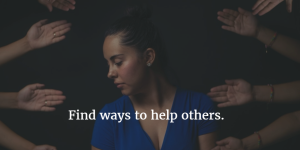Is there a Need for more Data Scientists?
Right now the term data scientist is like the webmaster of the mid-90s. Back then everyone knew they needed a website although, they didn’t know exactly why. What they did know, is the only way to do it was to hire a webmaster. We now know that within the webmaster role there are many different skills. This single role is now an entire team that includes UI/UX, coder, front-end, back-end, designer, developer, devops, and more. The original webmaster also helped create many other roles. At the time no one could even imagine the scope of social media, ecommerce, SEO, SEM, Apps, online marketplaces… the list goes on.
Today, many organizations have lots of data. They know they want to do something with it and all they know to ask for is a data scientist. As with the webmaster, the data scientist is getting thrown at any problem related to a large amount of data. We have just begun to discover the many other roles needed to create a successful data science team. Who knows what roles will be needed to form the other industries created with the use of data science. What will Artificial Intelligence, Augmented Reality, Computer Vision, Virtual Reality, Autonomous Vehicles, all need to be successful?
Prior to the dot com bubble, most tech company’s resources went towards building out their infrastructure. This included the hardware, racks, cabling, redundant backbone providers, and operating systems. All this was required just to get started. At the time, there was no way to imagine the possibility of allowing others to do this for you. However, we now know that possibility is very real and we call it cloud computing. Today, a majority of the resources for new companies go toward building a platform that has sensors on it. These sensors collect data that will be stored and then at some point the company hopes to have an opportunity to do something with it. Most of the time that just looks like a dashboard with a summary of all the data that’s been collected. The eventual goal is to analyze the data and create actionable outcomes.
We’re on the cusp of great change. The currently established business model is built on the understanding that if an organization collects data and stores it then they own it. This will no longer be acceptable. Soon, we’ll have companies created on a new model that’s built on data that’s already being collected by others. This will allow for a focus on actionable outcomes. Right now this may seem impossible. There’s no way we can trust someone else’s data. How will we know it’s being collected in an ethical way, that we can trust and also have access to in order to build a company around? This sounds very much like the way we viewed cloud computing just 15 years ago.
This change will come about because of two key factors. First, individuals and end nodes will begin to require control over their own data. Second, investors will no longer be willing to invest money in companies who are collecting the same data that others have already collected. This is very different from the current model where companies collect data, store it, and then sell small windows of access into it.
In order for this to be possible, there’s still much work to be done. We have infrastructure that needs to be built, policies that need to be put into place and talent that needs to be trained. Can you imagine a future where bandwidth is no longer the bottleneck? Where you can access data on billions of individual nodes as if they were on your laptop; enough processing power to run any number of calculations. What would you do with that? This is the future we’re building.
